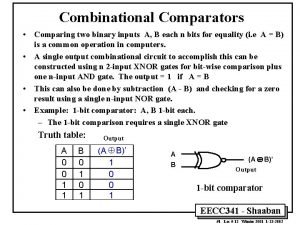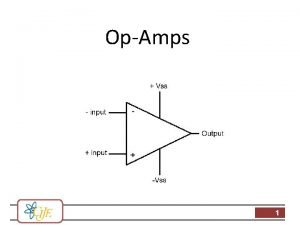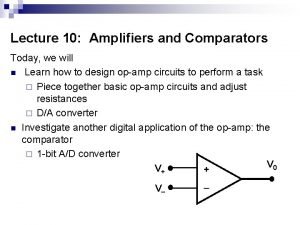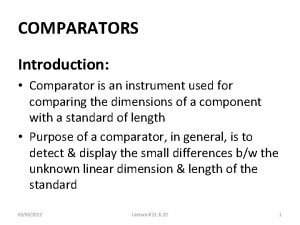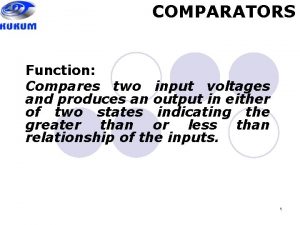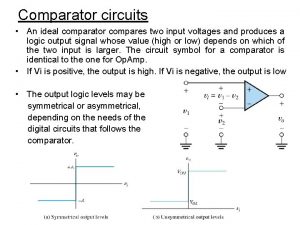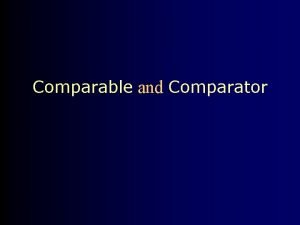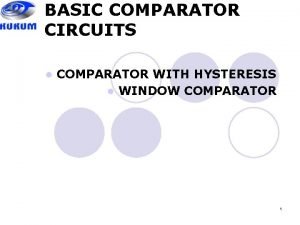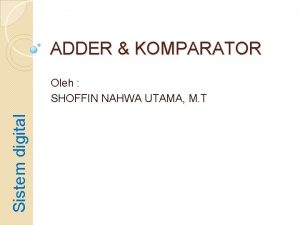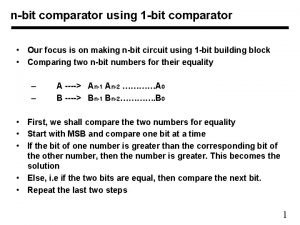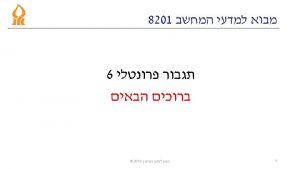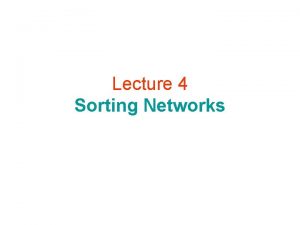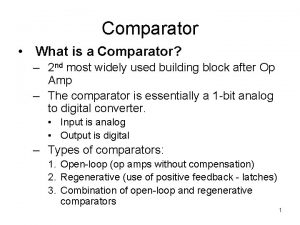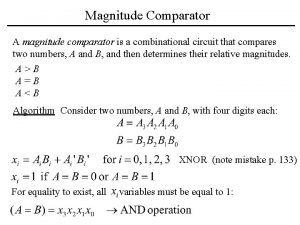Comparator n Introduction n A comparator is a












- Slides: 12

Comparator n Introduction : n A comparator is a precision instrument employed to compare the dimension of a given component with a working standard (usually slip gauges). n It thus does not measure the actual dimension but indicate how much it differs from the basic dimension.

n In mass production identical component parts are produced on a very large scale. n To produced interchangeability these parts produced very close dimensional tolerance. n As a result, inspection is often more concerned with the dimensional variation from the standard parts.

n The micrometer and vernier calliper are not more feasible because skill involve and time required to measure the dimension. n In such case comparator is more suitable for the measurement.

Basic principle of operation n The comparator first adjust on zero on its dial gauge with a gauge block in position. n The gauge block is of dimension which the work piece should have. n The work piece to be checked is then placed in position and comparator gives the difference in dimension in relation to the gauge block.

n Dimension may be greater, less or equal than the standard dimension. n If the dimension greater or equal than the standard gauge its indicate on dial gauge. n Thus comparator does not give the dimension of the work piece but just give the difference b/w work piece and standard gauge.

Mechanical optical comparator

Sigma comparator

It is mechanical comparator providing magnification in the range of 300 to 5000. n It consist of a plunger mounted on two flat steel string. n This provide frictionless linear movement. n

The plunger carries the knife edge which bear upon the face of mounting blocks of cross strip hinge. n The moving block carries a light metal yforked arms and wrapped around the smalldrum. n

n A thin phosphors bronze ribbon is fastened to the end of the forked arms and wrapped around the small drum, mounted on the spindle carrying the pointer.

n Any vertical movement of the plunger and hence that of the knife edge makes the moving block of the cross strip lever to pivot. n This cause the rotation of the y-arms. n The metallic band attached to the arms makes the driving drum hence the pointer to rotate.

n Total magnification of the instrument is L/a = l/r
